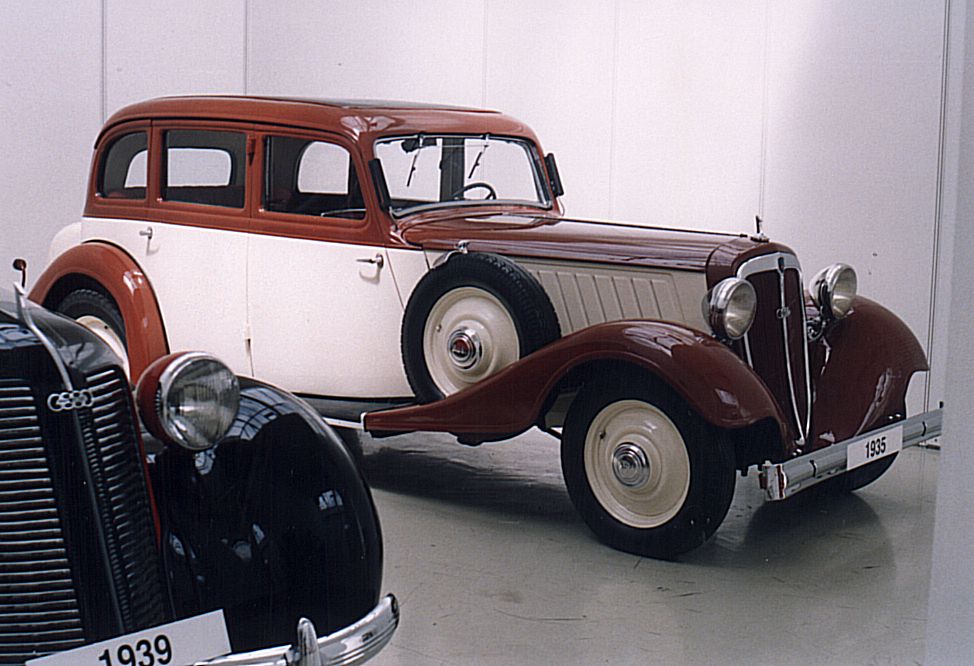In the realm of automotive innovation, certain vehicles transcend their era to become benchmarks of engineering progress. The Audi Front 225 Limousine, unveiled in 1935, stands as one such revolutionary milestone. This masterpiece of German engineering marked a pivotal moment in automotive design, introducing combinations of features that would influence car manufacturing for decades to come.
The mid-1930s represented a transformative period in European automotive development. Against this backdrop, Audi’s ambitious project emerged as a testament to the company’s commitment to pushing technological boundaries. The Front 225 didn’t just improve upon its predecessor — it redefined what was possible in luxury car design.
Engineering Excellence Under the Hood
The heart of the Audi Front 225 beat with unprecedented sophistication for its time. The 2.3-liter powerplant, producing 49.7 horsepower at 3300 RPM, represented a masterful balance of power and engineering precision. With cylinder dimensions of 71.0 mm bore and 95.0 mm stroke, the engine delivered smooth performance that belied its era.
The integration of this robust powerplant with front-wheel drive created an engineering challenge that Audi’s team solved with remarkable ingenuity. The four-speed manual transmission system channeled power efficiently, setting new standards for drivetrain design.
“When you examine the Front 225’s engine bay, you’re looking at the genesis of modern front-wheel-drive architecture. The packaging solutions they developed in 1935 influenced automotive design for generations.” — Marcus Heinrich, Classic Audi Restoration Specialist
This innovative powertrain configuration delivered benefits beyond mere technical specifications. The front-wheel-drive layout improved traction and handling characteristics, while the six-cylinder engine provided smooth power delivery that elevated the driving experience above contemporary offerings.
Revolutionary Design Philosophy
The exterior design of the Front 225 Limousine merged elegance with aerodynamic principles in ways that were ahead of their time. The flowing lines and balanced proportions created a visual signature that distinguished it from contemporaries.
Historical Reference!
The Front 225's design drew inspiration from aviation principles, incorporating streamlined elements that were revolutionary for 1935. This approach to aerodynamics predated widespread adoption of wind tunnel testing in automotive design.
Interior accommodations reflected a thoughtful approach to luxury and comfort. The cabin provided spacious seating for 4-5 passengers, with attention to detail evident in every aspect of the interior design.
“The Front 225 represents one of the finest examples of pre-war German luxury car design. Its influence can be traced through decades of automotive styling.” — Dr. Elena Weber, Automotive History Professor
The model’s design philosophy extended beyond aesthetics to include practical innovations in suspension and chassis design. These improvements enhanced both comfort and handling, setting new standards for ride quality.
Legacy and Historical Impact
Key advancements introduced by the Front 225 include:
- pioneering integration of front-wheel drive with a six-cylinder engine;
- advanced suspension system improving ride comfort;
- streamlined body design reducing aerodynamic drag;
- innovative powertrain packaging solutions;
- premium interior appointments setting new luxury standards.
The Front 225’s debut at the 1935 Berlin Motor Show marked a watershed moment in automotive history. Its presence demonstrated Audi’s technical prowess and set new expectations for luxury car capabilities.
Fact!
One of the original Front 225 Limousines resides in the Audi Museum in Ingolstadt, meticulously preserved as a testament to its historical significance. In 2009, for Audi's centenary celebration, specialized craftsmen from Zinke recreated a Front Special Roadster using original chassis components and archival photographs.
Modern Collectible Status
Today, the Audi Front 225 commands respect among collectors and historians alike. Surviving examples represent highly sought-after prizes in the vintage car market, with each carrying a unique story of preservation and restoration.
The 2009 release of CMC Models’ 1:18 scale replica, limited to 4,000 pieces, demonstrates the enduring fascination with this pioneering automobile. Each model, individually numbered, provides enthusiasts an opportunity to own a piece of automotive history.
Contemporary restoration projects face unique challenges due to the car’s innovative design features and the scarcity of original parts. However, these obstacles only enhance the model’s mystique among dedicated collectors.
The combination of historical significance and rarity has established the Front 225 as a blue-chip investment in the classic car market.
Charting New Horizons
The legacy of the Audi Front 225 extends far beyond its production numbers or technical specifications. It represents a crucial stepping stone in the evolution of automotive design, demonstrating how innovation can shape the future of transportation.
The principles established by this groundbreaking model continue to influence automotive development, serving as a reminder that true innovation often requires challenging established conventions.
| Pros | Cons |
|---|---|
| Revolutionary front-wheel-drive system providing improved traction | Limited production numbers making parts scarce for modern restoration |
| Advanced six-cylinder engine delivering smooth power delivery | Complex mechanical design challenging period maintenance |
| Innovative suspension system enhancing ride comfort | Higher fuel consumption compared to contemporary four-cylinder models |
| Spacious interior accommodating up to five passengers | Relatively heavy weight affecting performance |
| Historically significant design influencing future automotive development | Expensive purchase and maintenance costs in modern collector market |
| Premium build quality supporting long-term durability | Limited color and trim options originally available |
| Aerodynamic body design reducing drag | Complex restoration requirements due to unique engineering solutions |
The Audi Front 225 Limousine stands as a testament to the power of innovative thinking in automotive design. While its revolutionary features posed certain challenges, they ultimately helped shape the future of automobile manufacturing. Its influence continues to resonate through automotive history, making it a truly remarkable piece of engineering heritage.

